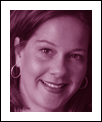![]() In this guest post by Vodník author Bryce Moore, Bryce shares his favorite things to see, do, and eat when visiting Slovakia.
In this guest post by Vodník author Bryce Moore, Bryce shares his favorite things to see, do, and eat when visiting Slovakia.
When I was asked to write a brief guest blog post about traveling to Slovakia, the first question that popped into my head was, “How do I keep it brief?” I’ve been to the country many times, and I absolutely adore it. There’s so much to see and do—although there are some things you have to watch out for if you’re not accompanied by a native Slovak speaker.
First off, let me say that this is just really for western Slovakia. I have yet to be over to the eastern half of the country, and I don’t know much about it. In many ways (from what I’ve been told, at least) the eastern and western sides are like two different places. Eastern Slovakia has a much bigger influence from Hungary. Western Slovakia is influenced by Austria and the Czech Republic. Surprising, in a country that’s significantly smaller than West Virginia. But then again, it’s Europe. Things work differently over there.
With that disclaimer out of the way, let me dig right into the meat of the topic: why should someone want to go to Slovakia? A better question would be why wouldn’t someone want to go to Slovakia? It’s a beautiful country, filled with mountains in the north, plains in the south, and rolling hillsides in between. It’s got dense forests, wild rivers, and some of the most awesome castles you can think of. The food is fantastic, the people are friendly, and it’s an area most Americans haven’t even heard of. (Seriously. Try writing a book that takes place in Slovakia, and see how many people ask you where that is again.)





